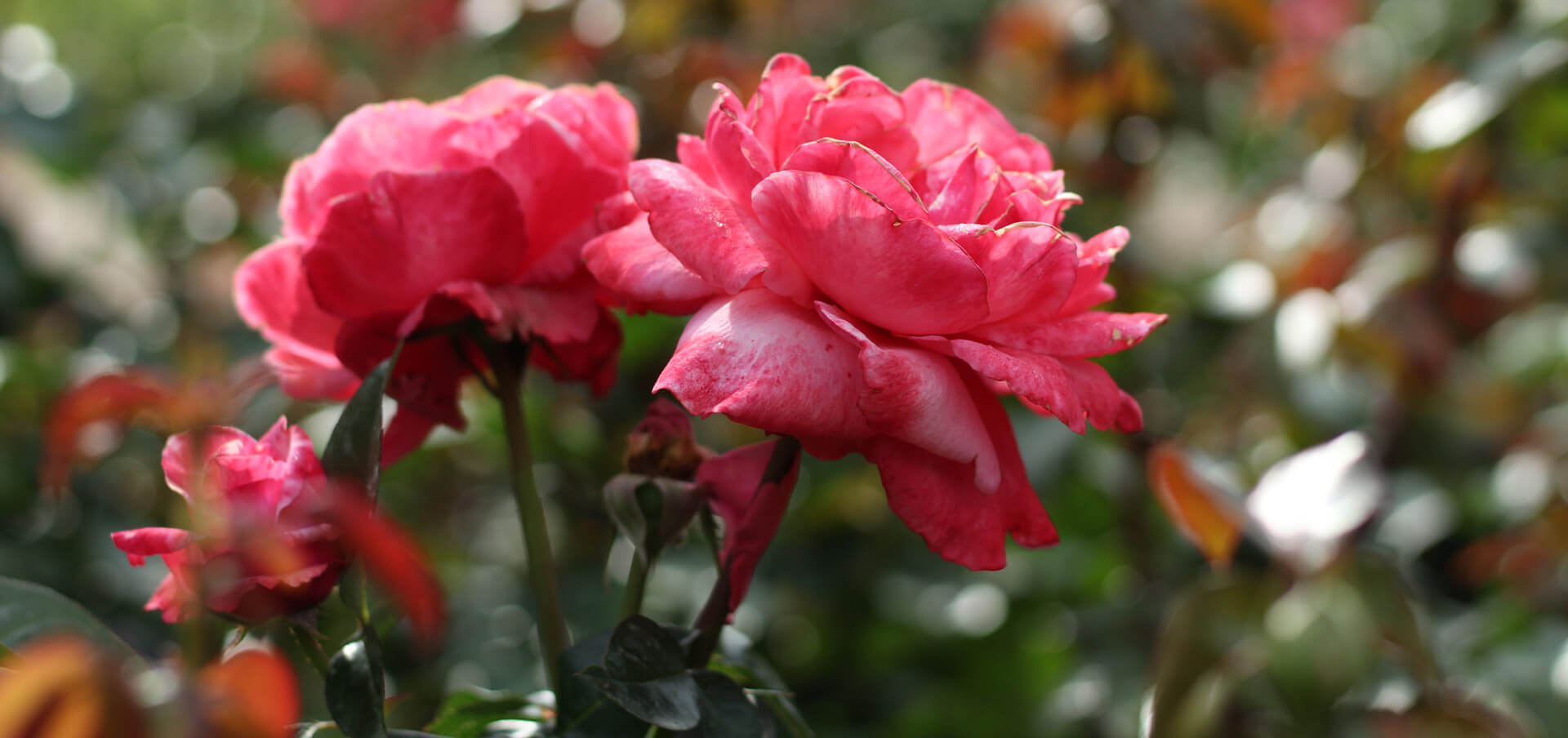Exploring Japan’s Camellia Culture: From Shizuoka to Oshima Island
As promised in last month’s article, our journey through Japan continues—this time taking us from the structured elegance of mainland gardens to the wind-swept island of Oshima. Here, the Camellia’s story deepens, rooted not only in cultivation but in centuries of culture, geography, and tradition. From wild species to the caldera of a dormant volcano, this leg of the International Camellia Society’s Congress offered some of the most intimate encounters yet with this remarkable genus.
The International Camellia Society (ICS), a nonprofit dedicated to the cultivation and preservation of Camellias, holds a Congress biennially in a host country. In March 2025, Japan welcomed us. Representing Bellingrath Gardens and Home—where Camellias are a core collection—it felt essential to visit the birthplace of ornamental Camellia breeding and connect with fellow enthusiasts.
Shizuoka Prefecture
Our journey began in Shizuoka, where we visited the late Mr. Shoji Himuro’s Camellia Garden. Despite spanning just over half an acre, the garden grows more than 1,200 Camellias. Familiar varieties like ‘Peter Pan’ and ‘Sundial’ entranced me, as well as unique Japanese cultivars like ‘Himuro Setsugekka.’ Named after the Japanese aesthetic theme setsugekka—snow, moon, and flowers—this variety embodies the ephemeral beauty of nature.
Next, we visited the Komuroyama Camellia Garden, where informative signage highlighted each plant’s flower form, bloom time, and origin. Of particular note was ‘Otome’ —also known as ‘Pink Perfection’ —planted widely as a street tree in Japan. It’s also the Camellia that adorns the Bellingrath logo.
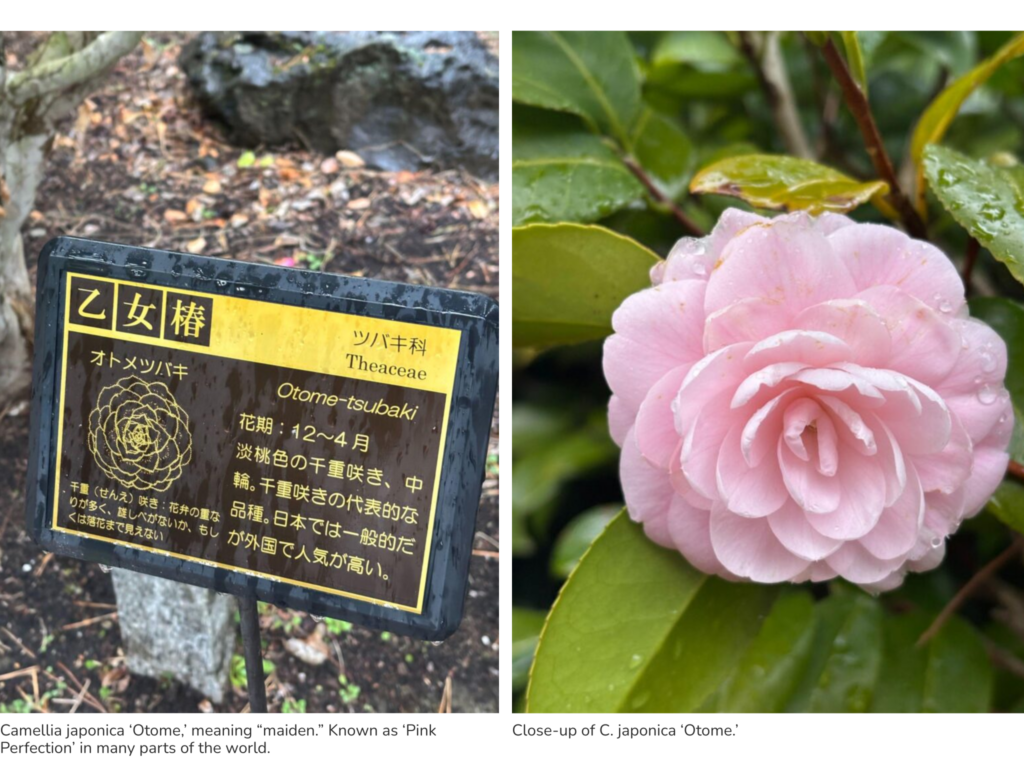
Furthermore, this garden also featured a Camellia-themed art museum. Quilts, woodblock prints, and paintings adorned the walls in a modern take on the traditional Japanese aesthetic.

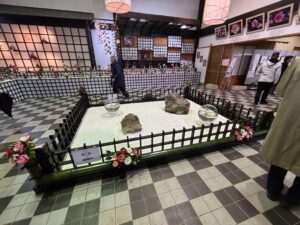
Oshima Island: A Camellia Sanctuary
After a restful night, we took a ferry to Oshima Island, home to three of Japan’s eight “Gardens of Excellence” and Mt. Mihara, an active volcano. The volcanic ash creates ideal soil for Camellias—nutrient-rich and well-draining. In fact, over three million wild Camellia japonica grow on the island!
We first stopped at Mr. Takashi Yamashita’s Tsubaki-Hana Garden. He prunes post-bloom to promote air circulation and larger flowers. While there, ICS President Mr. Gianmario Motta shared an Italian Camellia pruning tip: “A bird should be able to flit through the canopy”—a bit more poetic than the version I’d heard, involving a cat!
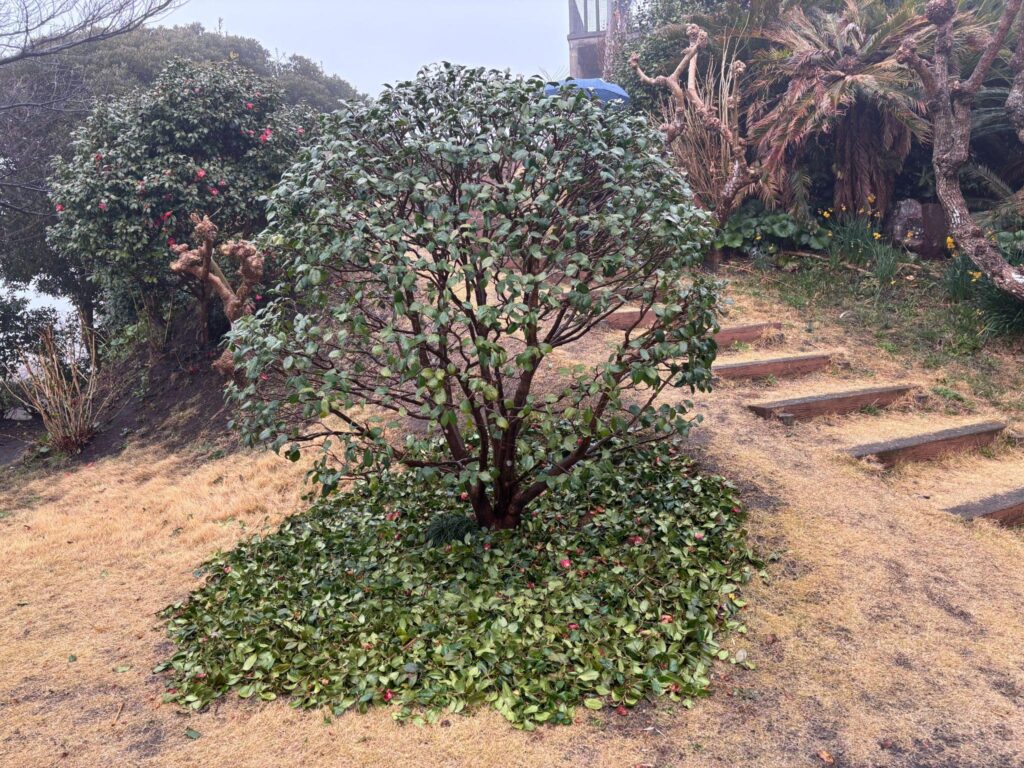
We then visited a wild C. japonica forest—an awe-inspiring sight. Standing before the wild C. japonica, I felt a deep sense of wonder at how centuries of human care and creativity shaped this simple flower into thousands of stunning, diverse forms. Yet just as human hands have shaped the Camellia’s beauty, they are now needed to protect its origins: this forest faces ongoing threats from Pallas’s squirrel, an invasive species that strips bark and weakens trees. Thankfully, efforts to control the population have shown promising results.
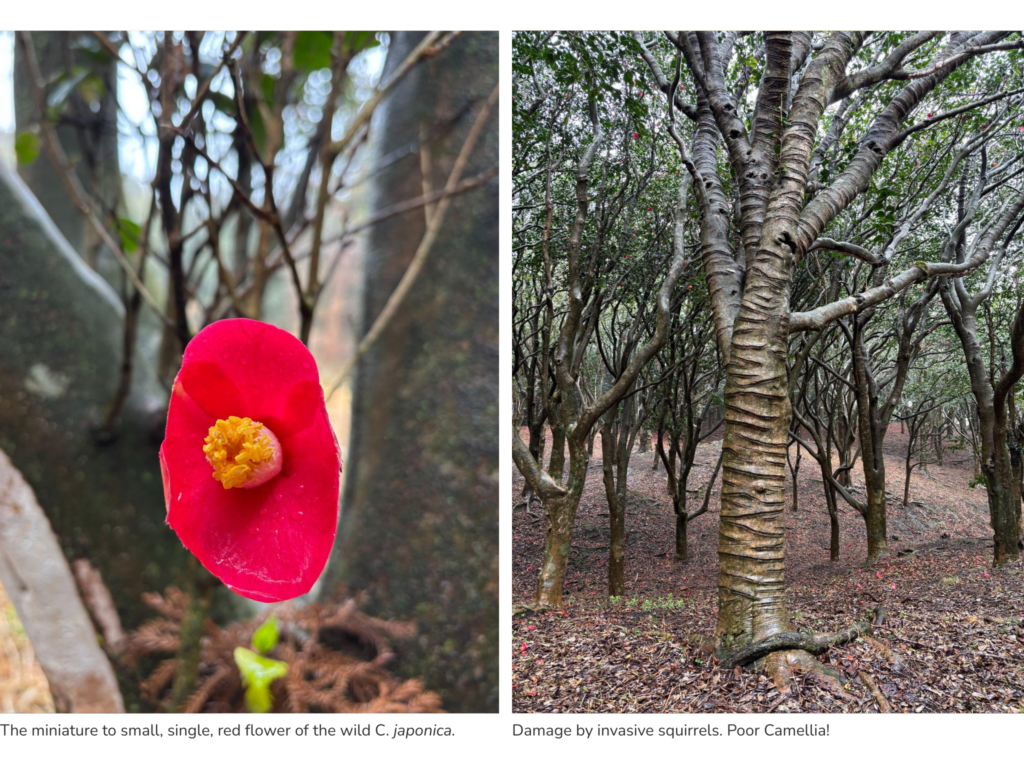
Our next stop was Tokyo Metropolitan Oshima Park, one of my favorite gardens. It was beautifully organized by hybrid origin, species, and even Camellias used in tea ceremonies. Yet despite the structure, the winding paths kept the experience full of surprise.
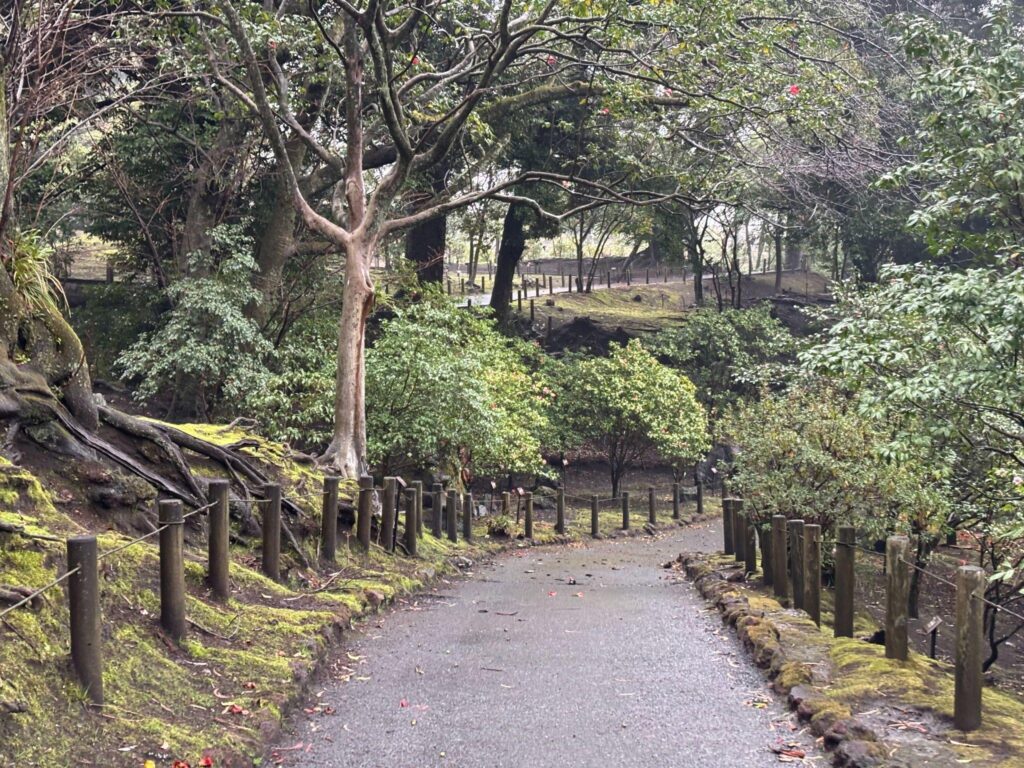
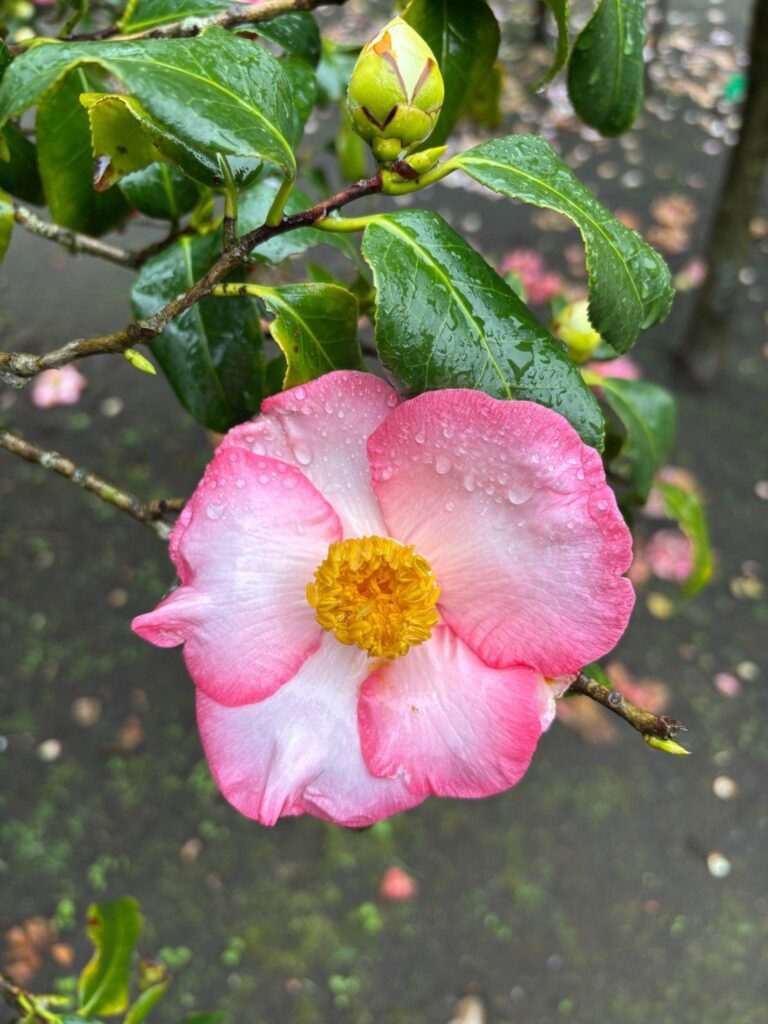
The day ended with a Japanese opera adaptation of The Lady of the Camellias (La Traviata)—a perfect cultural capstone.
Nurturing the Next Generation
The next morning, we visited Oshima Island High School—another Garden of Excellence. Here, students grow up immersed in Camellia culture, not just for beauty but also for practical uses like windbreaks and oil. Their collection of over 300 Camellias impressed me, especially one special cultivar: ‘Toki-no-hagasane’ (“folded feathers of Japanese ibis”), known outside Japan as ‘Bessie M. Bellingrath.’

We ended our time on Oshima with a visit to Camellia oil refineries. Though the oil’s production is labor-intensive and yields are low, it remains a treasured commodity for both cosmetic and culinary uses, holding a cherished place in the island’s heritage.
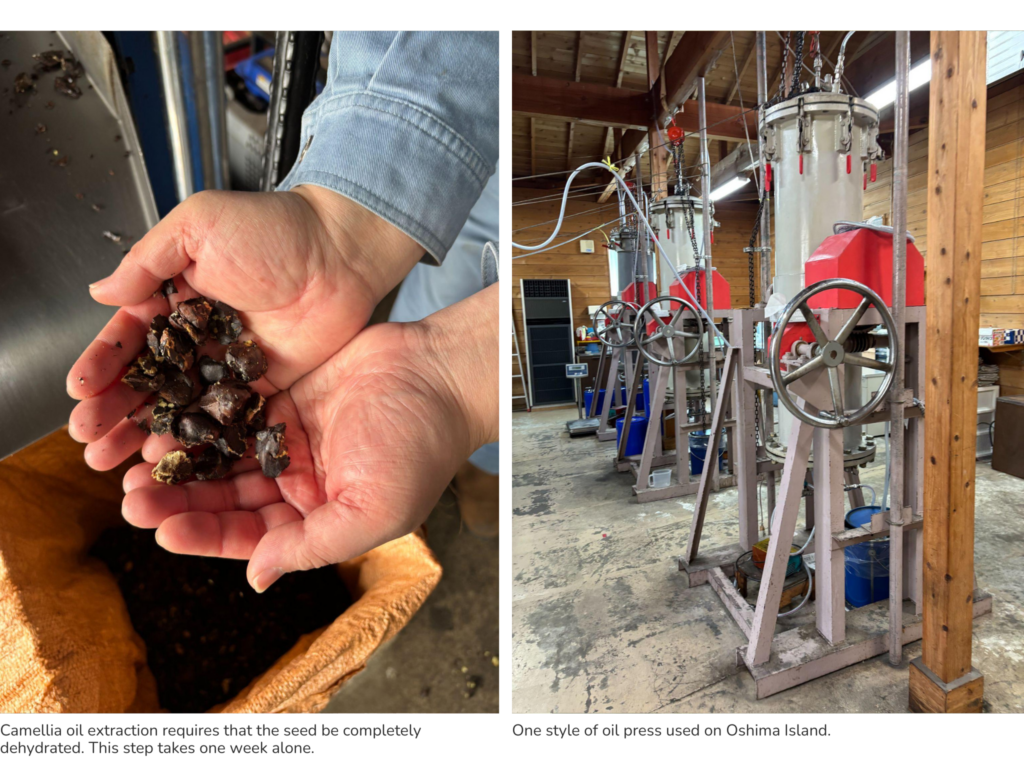
Final Reflections
After this incredible journey through Shizuoka and Oshima, the main Congress concluded. Parting ways with newfound friends and fellow Camellia lovers was bittersweet. Despite language and cultural differences, our shared passion united us. I look forward to staying in touch with many of them.
Stay tuned for the next month’s installment, where I share the Camellia treasures of Osaka and the ancient temples of Kyoto.
And mark your calendars: Bellingrath Gardens and Home will be a featured stop during the 2027 International Camellia Society’s pre-Congress. We’d love to welcome you there!

